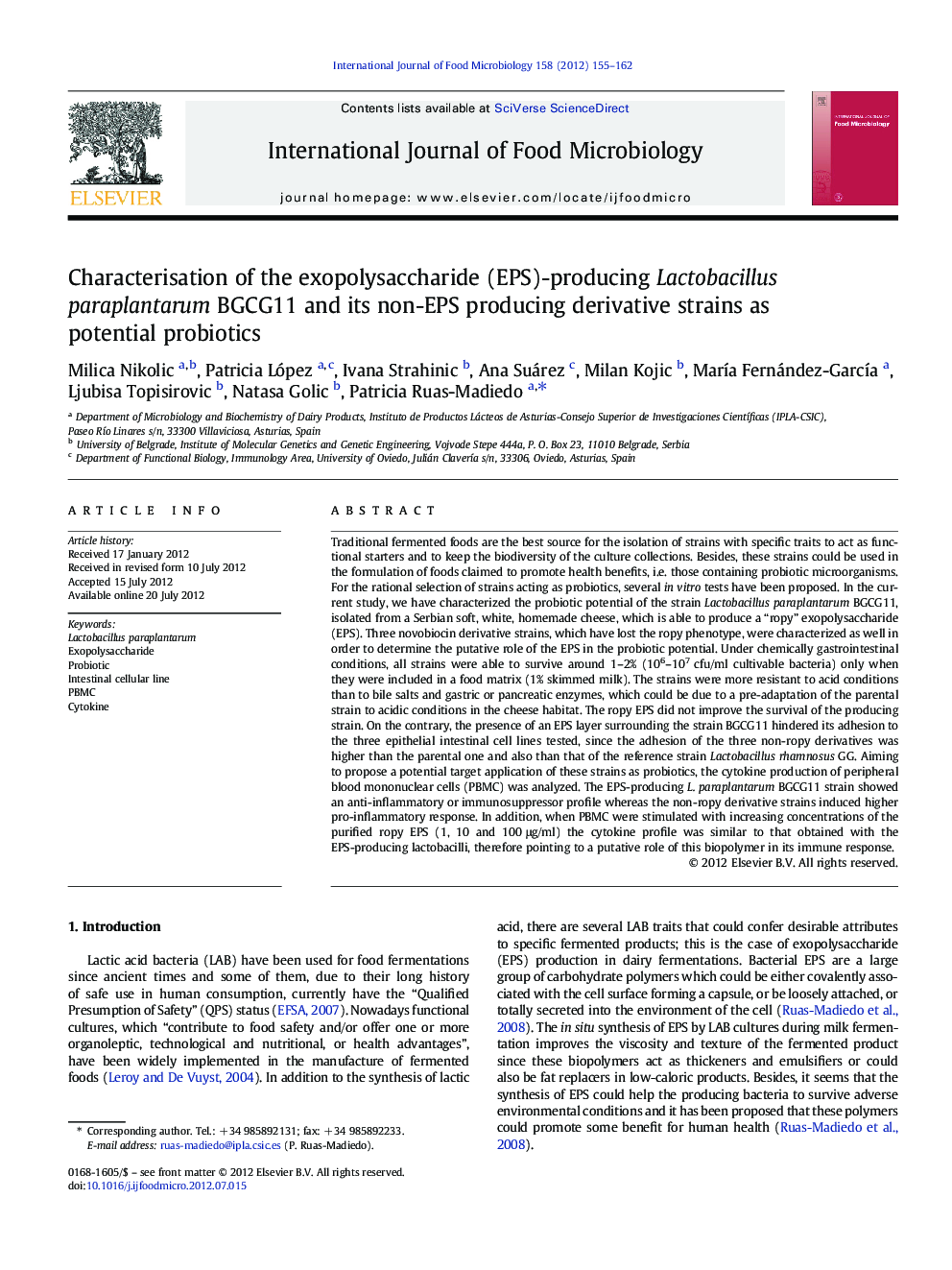| کد مقاله | کد نشریه | سال انتشار | مقاله انگلیسی | نسخه تمام متن |
|---|---|---|---|---|
| 4367643 | 1616640 | 2012 | 8 صفحه PDF | دانلود رایگان |

Traditional fermented foods are the best source for the isolation of strains with specific traits to act as functional starters and to keep the biodiversity of the culture collections. Besides, these strains could be used in the formulation of foods claimed to promote health benefits, i.e. those containing probiotic microorganisms. For the rational selection of strains acting as probiotics, several in vitro tests have been proposed. In the current study, we have characterized the probiotic potential of the strain Lactobacillus paraplantarum BGCG11, isolated from a Serbian soft, white, homemade cheese, which is able to produce a “ropy” exopolysaccharide (EPS). Three novobiocin derivative strains, which have lost the ropy phenotype, were characterized as well in order to determine the putative role of the EPS in the probiotic potential. Under chemically gastrointestinal conditions, all strains were able to survive around 1–2% (106–107 cfu/ml cultivable bacteria) only when they were included in a food matrix (1% skimmed milk). The strains were more resistant to acid conditions than to bile salts and gastric or pancreatic enzymes, which could be due to a pre-adaptation of the parental strain to acidic conditions in the cheese habitat. The ropy EPS did not improve the survival of the producing strain. On the contrary, the presence of an EPS layer surrounding the strain BGCG11 hindered its adhesion to the three epithelial intestinal cell lines tested, since the adhesion of the three non-ropy derivatives was higher than the parental one and also than that of the reference strain Lactobacillus rhamnosus GG. Aiming to propose a potential target application of these strains as probiotics, the cytokine production of peripheral blood mononuclear cells (PBMC) was analyzed. The EPS-producing L. paraplantarum BGCG11 strain showed an anti-inflammatory or immunosuppressor profile whereas the non-ropy derivative strains induced higher pro-inflammatory response. In addition, when PBMC were stimulated with increasing concentrations of the purified ropy EPS (1, 10 and 100 μg/ml) the cytokine profile was similar to that obtained with the EPS-producing lactobacilli, therefore pointing to a putative role of this biopolymer in its immune response.
► The EPS-producing and non-producing strains survived the simulated gastrointestinal transit.
► The non-ropy derivatives adhered better to intestinal cell lines than the EPS-producing parental.
► The parental strain has anti-inflammatory or suppressor profile but derivatives have the opposite.
► The differential properties of the parental and derivative strains could be due to EPS production.
Journal: International Journal of Food Microbiology - Volume 158, Issue 2, 17 August 2012, Pages 155–162